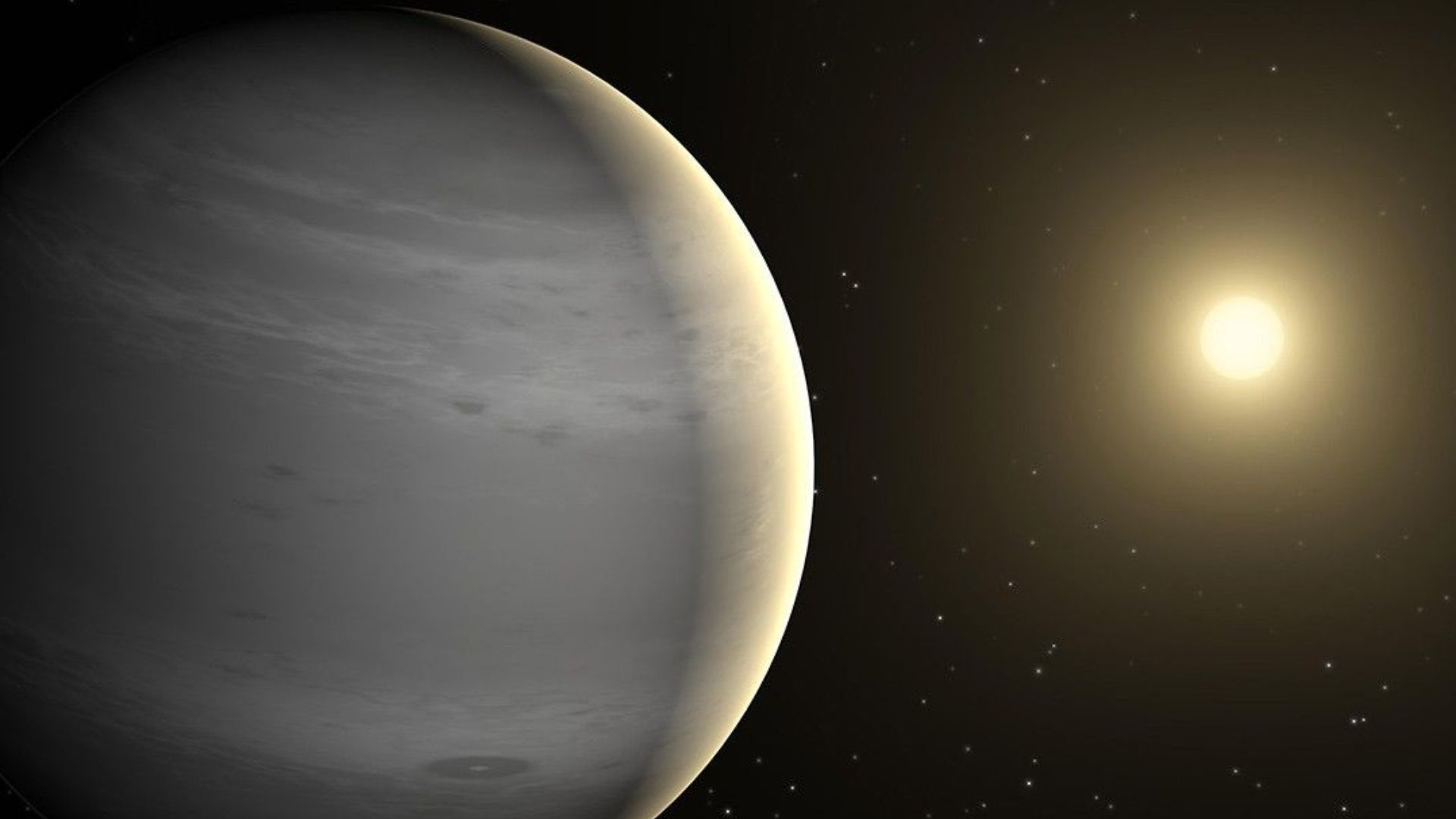A study suggests that exoplanets could be used to search for dark matter — the elusive substance that makes up 85% of the universe’s matter.
Dark matter’s gravitational pull proves it exists, but we’ve never been able to directly find it.
Now, the University of California, Riverside, study proposes that exoplanets, especially large, gaseous ones like Jupiter, could act as natural laboratories for dark matter search.
The researchers theorize that “superheavy non-annihilating” dark matter particles could gradually collect in the cores of these planets over time.
“If the dark matter particles are heavy enough and don’t annihilate, they may eventually collapse into a tiny black hole,” said Mehrdad Phoroutan-Mehr, first author and a graduate student in the Department of Physics and Astronomy.
“This black hole could then grow and consume the entire planet, turning it into a black hole with the same mass as the original planet. This outcome is only possible under the superheavy non-annihilating dark matter model,” Phoroutan-Mehr explained.
Dark matter in exoplanets
Before the UC Riverside study, scientists reportedly proposed in 2011 that dark matter could accumulate inside planets.
In the superheavy non-annihilating dark matter model, massive dark matter particles that don’t destroy each other can be captured at the planet’s core over vast periods.
A sufficient build-up of dark matter could ultimately lead to its collapse into a small, planet-mass black hole.
“In gaseous exoplanets of various sizes, temperatures, and densities, black holes could form on observable timescales, potentially even generating multiple black holes in a single exoplanet’s lifetime,” Phoroutan-Mehr said.
So far, astronomers have only discovered black holes that are more massive than our sun, and most theories agree that black holes can’t be any smaller.
A planet-sized black hole would be a groundbreaking find, potentially supporting this new dark matter model.
“It would support the thesis of our paper and offer an alternative to the commonly accepted theory that planet-sized black holes could only form in the early universe,” Phoroutan-Mehr added.
Future studies could conduct exoplanet surveys in the galactic center.
According to the standard model of cosmology, galaxies like the Milky Way are located within massive dark matter halos, where the highest concentration of this mysterious substance is found at the galactic center.
Future telescopes could prove this
In the past, scientists have studied dark matter by observing objects like the sun, neutron stars, and white dwarfs.
These celestial bodies serve as natural laboratories because different theoretical models of dark matter would affect them in distinct, observable ways.
For instance, some dark matter models predict that these particles could cause neutron stars to heat up.
“So, if we were to observe an old and cold neutron star, it could rule out certain properties of dark matter, since dark matter is theoretically expected to heat them up,” the author noted.
Moreover, the fact that many exoplanets, including Jupiter, have not collapsed into black holes provides a valuable clue for scientists.
This observation can be used to either rule out certain dark matter models, such as the superheavy non-annihilating dark matter model, or to refine their predictions.
“As we continue to collect more data and examine individual planets in more detail, exoplanets may offer crucial insights into the nature of dark matter,” Phoroutan-Mehr said.
In addition to the possibility of planetary collapse, Phoroutan-Mehr suggests that dark matter could also heat exoplanets and planets in our solar system or cause them to emit high-energy radiation. However, current instruments lack the sensitivity to detect these effects.
The findings were published in the journal Physical Review D.
